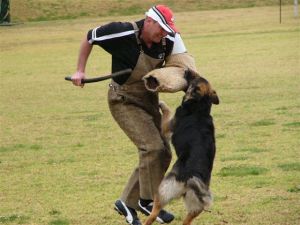 Israeli commandos recently stormed a flotilla headed to Gaza. These ships have to be stopped, otherwise rockets wind up in Gaza, and shortly thereafter land on Israel at random.
Israeli commandos recently stormed a flotilla headed to Gaza. These ships have to be stopped, otherwise rockets wind up in Gaza, and shortly thereafter land on Israel at random.
The Israelis were expecting light resistance, so rappelled down armed with paintball guns in order to show restraint. The “peaceful” protesters on the ship were waiting with knives, pipes, and by some accounts, guns. The video here shows Israelis walking into a hornet’s nest of impact weapons.
Ron Ben-Yishai
Our Navy commandoes fell right into the hands of the Gaza mission members. A few minutes before the takeover attempt aboard the Marmara got underway, the operation commander was told that 20 people were waiting on the deck where a helicopter was to deploy the first team of the elite Flotilla 13 unit. The original plan was to disembark on the top deck, and from there rush to the vessel’s bridge and order the Marmara’s captain to stop. Officials estimated that passengers will show slight resistance, and possibly minor violence; for that reason, the operation’s commander decided to bring the helicopter directly above the top deck. The first rope that soldiers used in order to descend down to the ship was wrested away by activists, most of them Turks, and tied to an antenna with the hopes of bringing the chopper down. However, Flotilla 13 fighters decided to carry on. Navy commandoes slid down to the vessel one by one, yet then the unexpected occurred: The passengers that awaited them on the deck pulled out bats, clubs, and slingshots with glass marbles, assaulting each soldier as he disembarked. The fighters were nabbed one by one and were beaten up badly, yet they attempted to fight back. However, to their misfortune, they were only equipped with paintball rifles used to disperse minor protests, such as the ones held in Bilin. The paintballs obviously made no impression on the activists, who kept on beating the troops up and even attempted to wrest away their weapons. One soldier who came to the aid of a comrade was captured by the rioters and sustained severe blows. The commandoes were equipped with handguns but were told they should only use them in the face of life-threatening situations. When they came down from the chopper, they kept on shouting to each other “don’t shoot, don’t shoot,” even though they sustained numerous blows.
‘I saw the tip of a rifle’
The Navy commandoes were prepared to mostly encounter political activists seeking to hold a protest, rather than trained street fighters. The soldiers were told they were to verbally convince activists who offer resistance to give up, and only then use paintballs. They were permitted to use their handguns only under extreme circumstances.
The planned rush towards the vessel’s bridge became impossible, even when a second chopper was brought in with another crew of soldiers. “Throw stun grenades,” shouted Flotilla 13’s commander who monitored the operation. The Navy chief was not too far, on board a speedboat belonging to Flotilla 13, along with forces who attempted to climb into the back of the ship. The forces hurled stun grenades, yet the rioters on the top deck, whose number swelled up to 30 by that time, kept on beating up about 30 commandoes who kept gliding their way one by one from the helicopter. At one point, the attackers nabbed one commando, wrested away his handgun, and threw him down from the top deck to the lower deck, 30 feet below. The soldier sustained a serious head wound and lost his consciousness. Only after this injury did Flotilla 13 troops ask for permission to use live fire. The commander approved it: You can go ahead and fire. The soldiers pulled out their handguns and started shooting at the rioters’ legs, a move that ultimately neutralized them. Meanwhile, the rioters started to fire back at the commandoes. “I saw the tip of a rifle sticking out of the stairwell,” one commando said. “He fired at us and we fired back. We didn’t see if we hit him. We looked for him later but couldn’t find him.” Two soldiers sustained gunshot wounds to their knee and stomach after rioters apparently fired at them using guns wrested away from troops.
2 errors
During the commotion, another commando was stabbed with a knife. In a later search aboard the Marmara, soldiers found caches of bats, clubs, knives, and slingshots used by the rioters ahead of the IDF takeover. It appeared the activists were well prepared for a fight.
Some passengers on the ship stood at the back and pounded the soldiers’ hands as they attempted to climb on board. Only after a 30-minute shootout and brutal assaults using clubs and knifes did commandoes manage to reach the bridge and take over the Marmara.













Real Life Combat: Bat versus Wolf Dog
Posted in Commentary, Real Life Combat with tags Al Cuizon, Real Life Combat, stick versus dog on May 28, 2010 by bigstickcombatMy thanks to reader Old Dave for alerting me to this story.
Prince Edward appeared to lose his temper with an unruly gundog yesterday - apparently taking a swipe at it with his walking stick.
Teen saves 8-year-old boy from dog attack
By MICHAEL MOORE Missoulian | Posted: Saturday, May 22, 2010
ST. REGIS — Brandyn Jones was watching television last Thursday when he heard the screaming.
“I could tell something really bad was happening,” the 17-year-old Jones said Thursday. “So I went outside to see if there was anything I could do.”
<!–
–>
The screams emanated from a little boy who’d been riding his bike down the dirt alley. Eight-year-old Cody Lewis was headed back home from a friend’s house to pick up a water bottle.
As Cody passed a mobile home owned by John McClelland, he was attacked by McClelland’s dog, a large wolf-dog hybrid.
The dog had pinned Cody to the ground and was snarling and biting the boy when Jones arrived.
“Cody had his arm up, like he’s shielding his face and the dog is just going after him,” Jones said.
Jones grabbed a short metal bat from his house and started hitting the dog, which weighed 175 pounds. A couple of blows forced the dog to retreat, and Jones scooped Cody into his arms.
“I just picked him up and headed for his house,” Jones said.
Cody was then whisked away to a doctor in Superior, who cleaned a serious wound to his leg and recommended that his mother Anita take him to a Missoula hospital.
Cody was stitched up at Community Medical Center and was also treated for abrasions to his stomach, where the dog also tried to bite him.
“We’re just really lucky that Brandyn was close by, because this could have been so much worse,” Anita Lewis said Thursday. “I just want people to know he’s a hero.”
Brandyn took his heroism modestly, as if he’d only done what anyone would have done.
“Anybody who knows that dog knows you’d have to get a kid away from him,” he said. “I definitely had second thoughts about going after him, but I figured I had to do something to help Cody.”
McClelland agreed that Jones quite possibly saved Cody’s life.
“I do think it’s a good thing that he intervened, because it is possible that the dog would have killed the boy,” he said.
McClelland said he spoke with Cody’s stepfather and expressed his remorse, but he still has questions about the incident. Cody’s bike was found in the alley, a few feet from a car parked in McClelland’s very short driveway. The boy said he was on his bike in the alley when he was attacked.
But McClelland claims the dog was attached to a metal line and could not have reached the alley.
“I feel like he was on my property, and we’ve had a lot of kids giving the dog problems by throwing stuff at him and spraying him with gravel from their bikes,” he said. “That’s not an excuse, but when the dog is tied up, he’s working, guarding the house.”
Anita Lewis said her son knows better than to go near McClelland’s dog.
“Everybody in the neighborhood knows about that dog,” she said.
Lewis isn’t really focused on making a fuss about the precise location of either Cody or the dog, which was named Cochise. She’d rather focus on Brandyn Jones.
“I just can’t say enough good things about what he did for Cody,” she said.
Still, hard feelings are likely to linger in the neighborhood.
After authorities responded and Cody was taken away for medical treatment, another neighbor not connected to the incident came to McClelland’s house and shot his 10-year-old dog.
“Law enforcement had been there and they didn’t do anything about my dog, so I’ve got a serious problem with someone coming to my house and killing my dog,” he said. “But I’ve contacted an attorney and I will handle that situation that way. I’m just glad the little boy is OK.”
Cody missed a few days of school and will likely have a scar on his leg, but the wounds may be deeper. On Thursday, he almost couldn’t bring himself to get out of his mother’s car as she drove him down the alley to show a visitor where the incident took place.
“I think he’s pretty scared to be here where it happened,” she said.
I toured Cebu City with De Campo stylist Al Cuizon, who introduced me to several Cebuano grandmasters. I remember Al saying, “Can you hit hard enough to stop a rabid dog with one blow?” I know we may not often think of defense against dogs, but it happened in this story, and with the popularity of fighting dogs and guys trying to outmacho each other with the fiercest breed of dog, a dog attack is not so unlikely.
Once again, we must ask if the typical 28 inch stick is enough to drop a wolf-dog if necessary, or a Rottweiler or pitbull. I believe that the long, heavy stick provides both greater safety through longer reach and added stopping power.
Leave a comment »